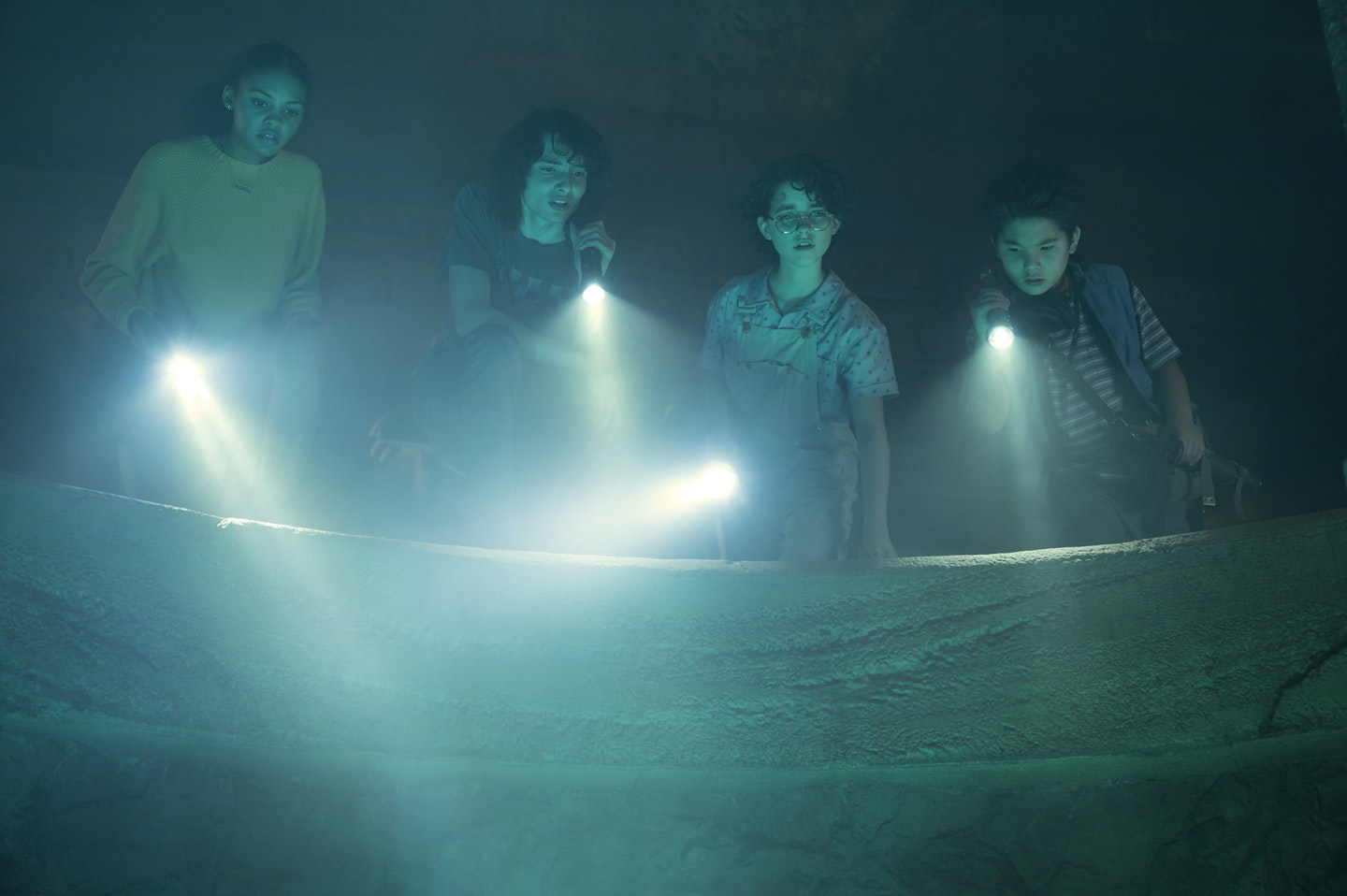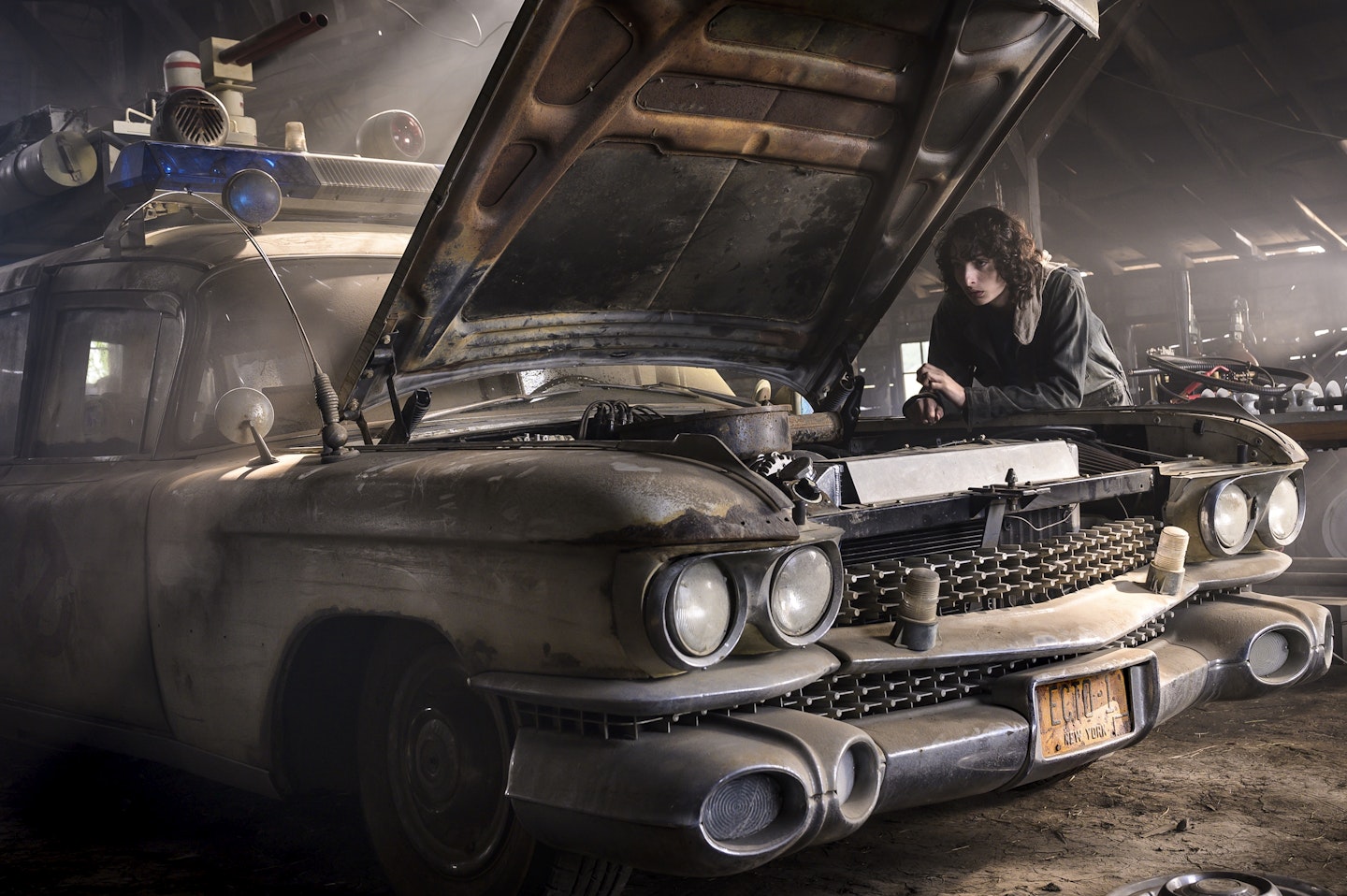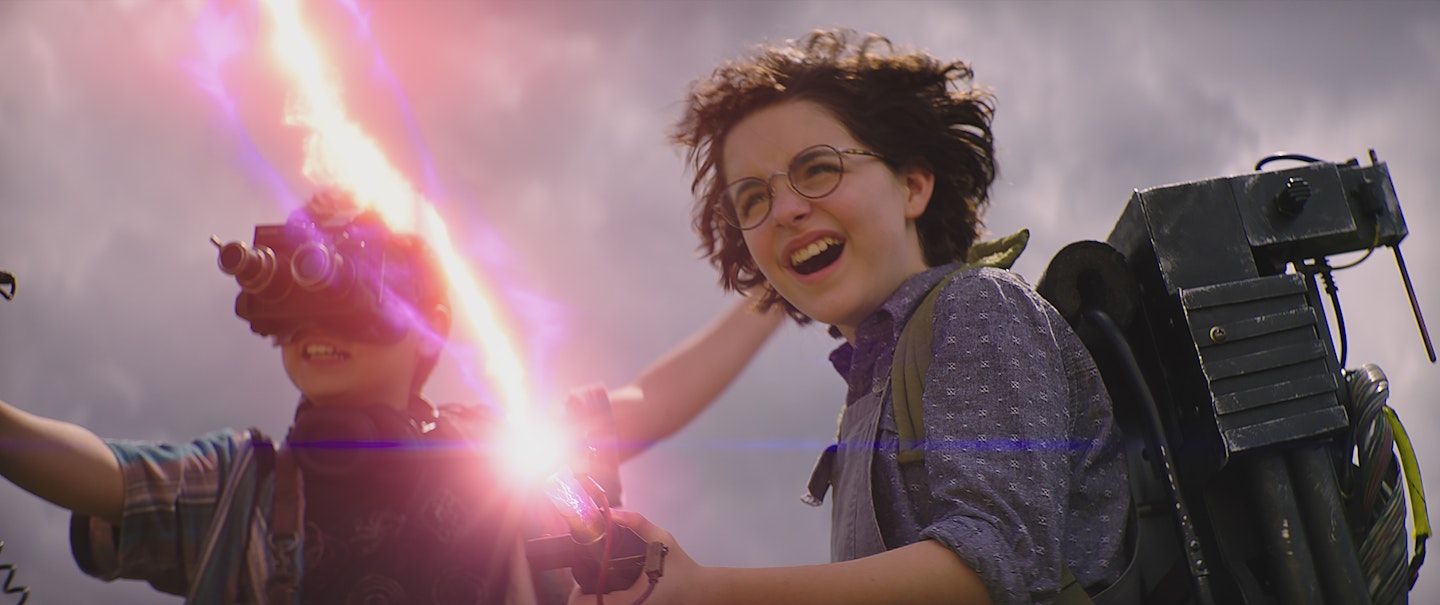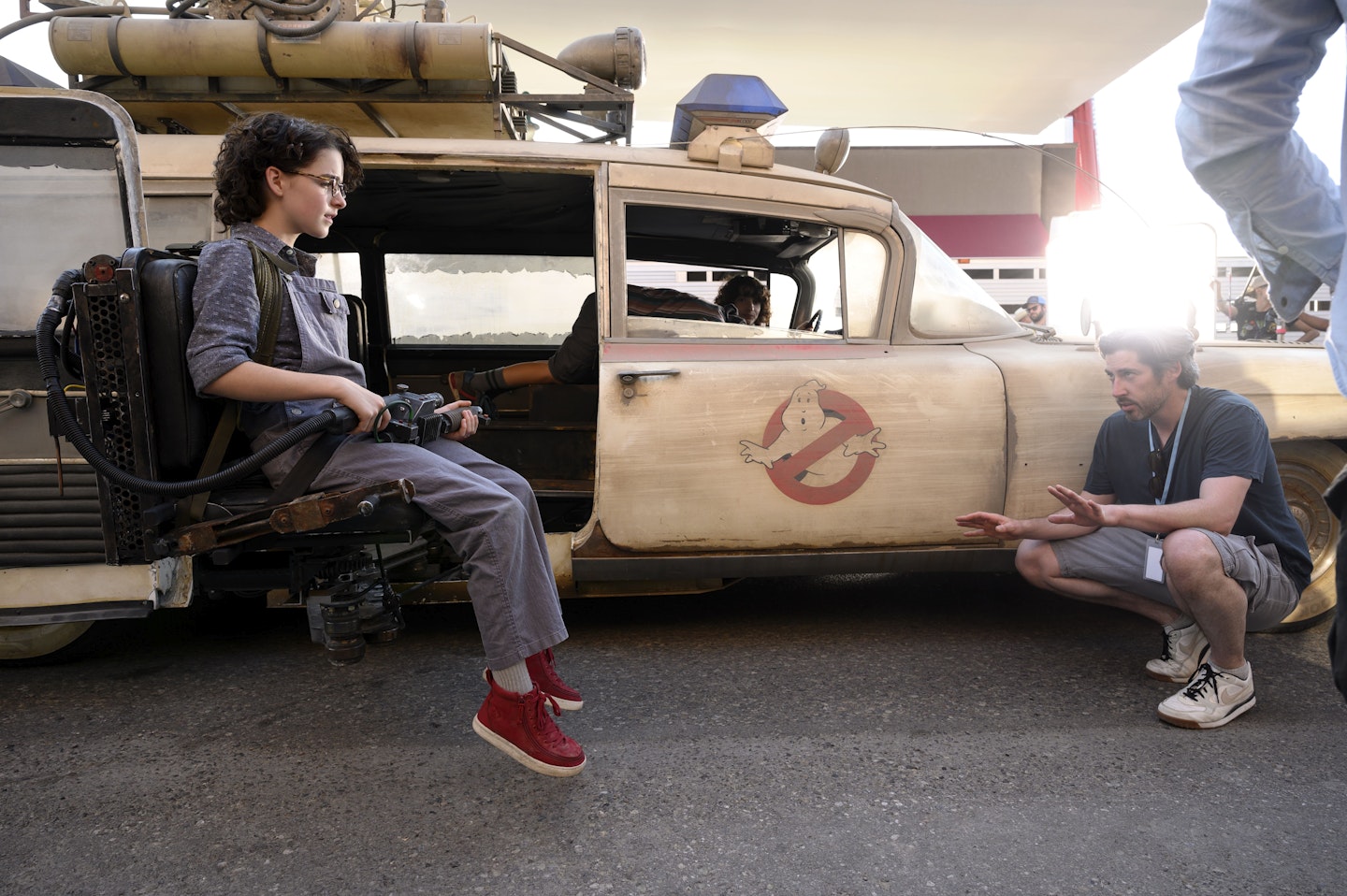Warning: contains spoilers for Ghostbusters: Afterlife
Jason Reitman was already in the family business when he made Ghostbusters: Afterlife. He had followed in his father's footsteps by becoming a successful filmmaker in his own right with the likes of Thank You For Smoking, Up In The Air, Juno and, more recently, Tully and The Front Runner.
Yet Afterlife is on a whole new level, with Reitman's dad Ivan, directing and producing the two original Ghostbusters movies, and being one of the shepherds of the entire film series. Jason, meanwhile, grew up around them, and hadn't truly entertained the notion of continuing the story... until he hit upon an idea that also tied into a family connection.
If you've not seen the film, then read no further – we get into spoilery details, as well as discussing Reitman's own thoughts on making it. To hear the full chat, you can subscribe to the Empire Spoiler Special Podcast feed. Check out some highlights below.
There are references to Cujo and Child's Play in the film. Why those two titles?
Cujo was written directly into the script. And the Beethoven reference is actually an Easter egg of sorts because my father is the producer of the Beethoven movies. One of my first jobs as a teenager was a production assistant on Beethoven's 2nd, which is the sequel, of course. And so there's a Beethoven joke, based on Cujo in the movie. And then Child's Play. We wanted to make it a runner, and I loved Child's Play as a kid. So, I was thrilled when we got that in there.
Were you looking at those films in terms of foreshadowing? Obviously, Cujo has a Terror Dog at its heart...
Oh my God, I wish I could say that that was on purpose! I really just wanted to make the Beethoven joke, there was no Terror Dog thought. In the future, of course yeah, I will say that, so you think it's part of my overwhelming genius. But no, I didn't think of that.

Ghostbusters is a cinematic gateway drug into horror. The moment with the arms punching through the chair to grab Sigourney [Weaver] is something that you riff on here.
I am coming from lunch with my father into this interview. And we spent lunch talking about David Cronenberg. Because my father produced Cronenberg's first couple of films; he produced Shivers, he produced Rabid. One of my father's first approaches on Ghostbusters was that he wanted to take the horror seriously. Usually if you have a comedy about ghosts, it's going to be a bunch of goofing around. They're not going to treat the ghosts seriously, from a level of craft. One of the most amazing things about Ghostbusters is the artistry that went into the animatronics and the puppetry, like the 65mm cloud tank footage they did just for the cloud work above Dana's apartment building.
Three years ago, I'm at the Directors Guild, sitting next to Steven Spielberg. He asked me, "What are you working on these days?" And I said, "I'm directing the next Ghostbusters." And without pause he goes, "Library ghost, top 10 scares of all time." Yep. From the director of Jaws.
Afterlife takes the scares seriously too. And you start off right from the beginning, with that really intense sequence with Egon pursued by the spirit of Gozer.
I had much less experience making anything science fiction or horror-based than my father did when he went into making the first Ghostbusters, but we wanted to make the action legit. We wanted the scares to be real. I had a conversation with Eli Roth at one point, as I had no idea how to do this. And he said, "Look, you have to honour it and study it the same way that you would have honoured and studied comedy." We worked with some of the best and we tried to really honour not only the original Ghostbusters, but other horror films. And with that introduction, we were looking for something that was intense, that would grab people right from the off.
That leads us to the Spengler family...
We knew from the beginning that we wanted to make a movie about the Spengler family. To open with Egon and to see someone die in the middle of trying to catch a ghost, which had not happened in the previous films. If my father's point of view is that we should take this stuff seriously, then we should have a ghost kill a human and let the audience know that we're not screwing around here.

At the end of the movie, Egon's ghost shows up. That presumably meant a long conversation with Harold Ramis' estate and his family. Can you talk us through that process?
We had this idea, which was that a family is introduced to their history and who they are. A teenage girl finds proton pack on a farm and a teenage boy finds ECTO-1 in a barn, and in so doing, learn who they really are, and what adventure lays ahead. We loved this concept. We wanted to make a movie about three generations of a family that needed to be repaired. And how do you repair a relationship when someone's no longer there? That was really important to us. It gets repaired eventually with an embrace, and that was the big conversation when we were talking to anybody on the phone about visual effects. This movie does not end with an explosion. It doesn't have a Death Star that blows up. It ends on a hug. And a hug has to work or we've got nothing.
The first person that ever read the script was my father, and after my father it was the Ramis family. It was Harold's widow, Erica, and daughter Violet, who I grew up knowing – we were both on the set of the original back in '83. I talked to them about what we wanted to do, how we were going to do it. They came to set, and they viewed visual effects that came to the editing room. They're the first people to ever actually see the movie. So they were part of this movie from start to finish and I think they were aware of how much I wanted to honour Harold. Egon was my favourite Ghostbuster. This is a Spengler story, and this movie is dedicated to him in every way.
So the real question was how do we pull this off? Anyone who enjoys movies has now seen examples of virtual characters that really work and virtual characters that are difficult to look at. It's one thing to see in the middle of a movie, where it kind of comes and goes. It's another thing if the whole climax of the movie will be decided on whether or not you believe these two people are hugging each other, that a daughter is forgiving her father and saying goodbye to him. And that these Ghostbusters, who have gone through this misunderstanding and been broken apart, get to stand next to each other one more time and bust a ghost.

How did you find a balance between telling Phoebe and Trevor's story at the end, whilst also giving the audience what they want by bringing the Ghostbusters together again?
I wanted to make a movie with a 12-year-old girl as the protagonist. She's the same age as my daughter, and I wanted to make a hero for my daughter who was a young, smart scientist who's misunderstood by the world. And like every Ghostbuster before her, was an outsider who became a hero when she put on the flight suit. So when it came to the ending of the movie, I had this vision of her standing like Clint Eastwood. I think even we wrote into the screenplay, "She stands there like, Clint Eastwood, with a shotgun on the horizon," and she cannot do it on her own. The original guys cannot do it on their own.
And so that extra set of hands arrives on the proton pack, between Phoebe and her grandfather... like anyone who's ever swung a baseball bat for the first time, or learned how to do anything, I remember my grandfather taking me fishing as a kid and him holding the fishing rod with me. You can just close your eyes and imagine your grandparent's hand around your hand, teaching you to do anything. We wanted it to be a giant intergenerational moment, because this is for anyone who grew up on Ghostbusters and loves it. We wanted to make a movie for you. But also there's a generation of young people that we wanted to give characters to latch on to, so that Ghostbusters could have a continued life that is out of mine and my father's hands, and will be in the hands of other directors who can continue to make Ghostbusters movies.

You overlay this movie on the first movie to an extent.
It's lovely to have a sense of mythology, and to really build upon the foundation that people already know. You want to relive it, like you want to see ECTO-1 fly around the corner again, and to see the guys in their flight suits again. You want to re-experience these things, but in a new way. That was always the goal, this kind of marriage in which we begin a new journey in a new place with new people, but you find yourself mapped upon a story that you know somewhere in your heart, and the mythology that you have a connection to because of how many times you've watched the first one.
With Star Wars, most people have a very strong sense of what the Force is and how lightsabers work. Ghostbusters, people have a general idea. They mistake Gozer for Zuul and Zuul for Gozer, and they don't really know who Shandor is. We have to, as filmmakers, reintroduce people to these ideas in a concrete way.
And you made the decision to have Gozer in the movie, and Ivo Shandor, played here by JK Simmons.
I'm so lucky in that I met I met JK Simmons in an audition for Thank You For Smoking, which of course led to him being in Juno and Up In The Air and everything I've ever done. We're linked, so he had to be in this, and we knew we were gonna have a Shandor who had one line and then he got ripped in half. By the way, the ripping in half was a practical effect. The same guy who made the Terror Dog animatronics created a JK Simmons that Olivia Wilde could grab by his hair and just rip it everywhere. The visual effects team put together a bid for the ripping of Shandor door and I said, "Oh no, we're doing this practical." I drew this frame on a whiteboard with a really shitty Gozer, with a flat top of the body getting ripped in half. The visual effects team was, like, "We're keeping this in the budget just in case – you're never gonna do it". The team built this scissoring JK Simmons puppet that would rip apart, and they would just fill it with goo and then rip it apart. It was wild and amazing.
And Gozer is Olivia Wilde?
It's Olivia Wilde, but it is also Emma Portner – the movement of Gozer was brought to life by the great modern dancer Emma Portner, and the face is Olivia Wilde.

Let's talk about the car chase, which is interesting, because previously ECTO-1 was just something that got the Ghostbusters from A to B.
The Ghostbusters always were four guys standing next to each other busting ghosts. We wanted to put it into motion, and we have one of the most iconic cars in movie history. We came up with this gunner seat idea, because we had the idea of this 12-year-old girl hanging out the side flying around corners – and particularly a girl who has been dismissed and misunderstood, who's chalked up as a scientist who doesn't see any action. Now she's hanging out the side of the car, and as she's constantly pulling the lever to get out and bust a ghost, she becomes a hero. That's a reason to make the movie in itself.
